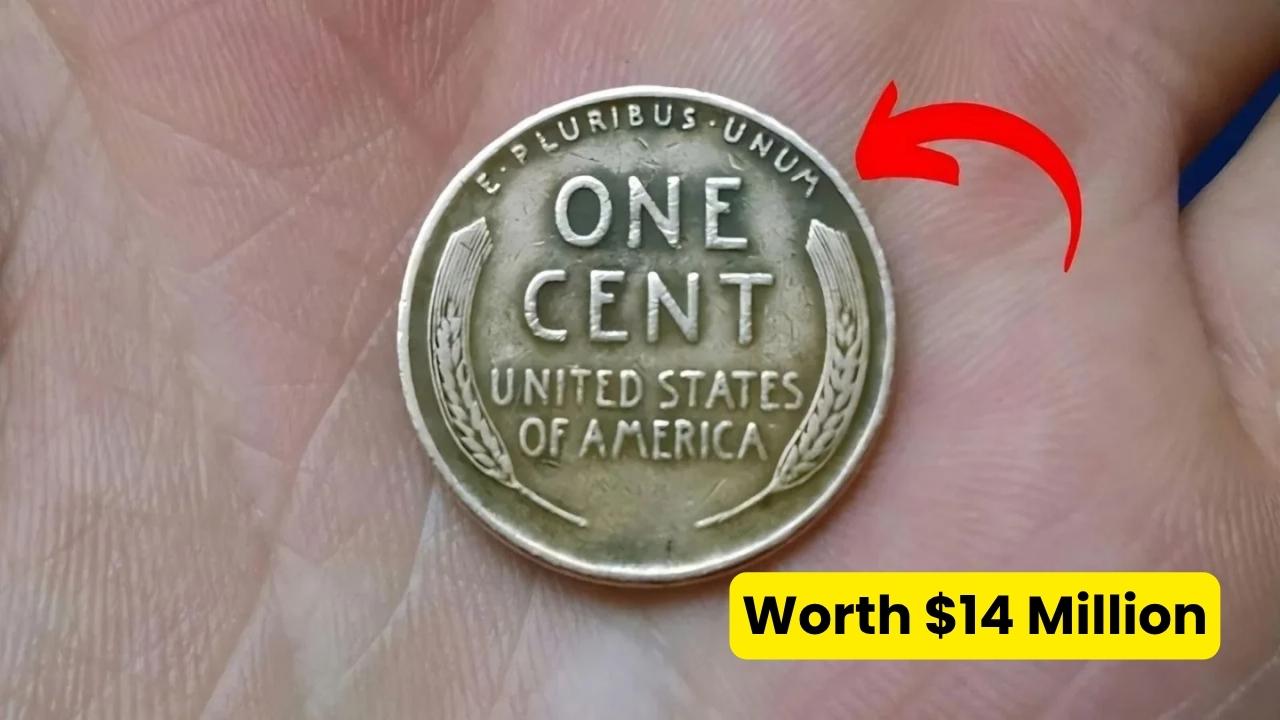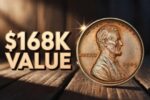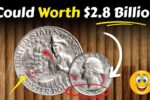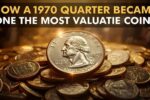Imagine casually sifting through your loose change and discovering a coin worth millions. It sounds like something out of a movie but for collectors of rare coins, this is very real. The Lincoln Wheat Penny, especially its rarest variants, has long fascinated enthusiasts around the world. Some reports even suggest that a single Lincoln Wheat Penny could be valued at an astounding $14 million, making it one of the most coveted coins in history.
What Makes the Lincoln Wheat Penny So Unique?
First minted in 1909 and produced until 1958, the Lincoln Wheat Penny features the familiar portrait of Abraham Lincoln on the front and two stalks of wheat on the reverse hence the nickname “Wheat Penny.” While billions were minted over the decades, only a select few are considered extremely valuable. Errors during minting, unusual materials, or distinctive markings can transform a simple penny into a treasure sought by collectors.
The $14 Million Penny: Reality or Rumor?
The idea of a single Lincoln Wheat Penny being worth $14 million has sparked curiosity and debate among collectors. This staggering valuation is largely tied to its extreme rarity. One contender is the 1943 Wheat Penny accidentally struck in bronze instead of the more common steel due to wartime metal restrictions. Only a handful of these coins are known to exist, and their rarity makes them immensely desirable at auctions.
While the $14 million figure is often mentioned in reports, it remains speculative. Nevertheless, the sheer idea of a penny reaching such a value highlights just how fascinating coin collecting can be.
How Could Such a Rare Penny Still Be Around?
It may seem improbable that a coin worth millions could still be circulating unnoticed but history shows it’s possible. Over decades, rare pennies have been spent or forgotten in jars of change, wallets, and drawers. Because most people don’t examine pennies closely, there’s always a chance that a hidden gem is just waiting for a sharp-eyed finder.
Identifying Valuable Lincoln Wheat Pennies
Not every Wheat Penny holds immense value, but certain years and minting errors stand out. Collectors especially look for:
- 1909-S VDB: The first year of the Lincoln Penny, featuring designer initials. Estimated value: up to $100,000.
- 1943 Bronze: Struck by mistake in copper instead of steel. Estimated value: up to $1.7 million.
- 1955 Double Die: A penny with a striking double-image error. Estimated value: up to $125,000.
- Unknown Rare Penny: Rumored unique coin potentially valued at $14 million.
Details like the mint mark, year, and unusual markings are key clues that could reveal a penny’s true worth.
Why Collectors Adore the Lincoln Wheat Penny
The Wheat Penny is more than just money it’s a piece of history. Collectors appreciate its simplicity, historical significance, and the thrill of discovery. Each rare penny tells a story, whether it was minted during wartime or features a striking error that makes it one-of-a-kind. Searching through old coins becomes a form of treasure hunting, with every find carrying the potential for both monetary and historical value.
Could You Be Holding a Million-Dollar Penny?
The odds may seem slim, but it’s not impossible. Examine any Wheat Pennies you come across, especially those minted between 1909 and 1958. Even if you don’t uncover the legendary $14 million penny, you could stumble upon one worth thousands a discovery that’s just as exciting for collectors.
FAQs
What is a Lincoln Wheat Penny?
A U.S. one-cent coin minted from 1909 to 1958, featuring Abraham Lincoln on the front and wheat stalks on the back.
Why is the 1943 Wheat Penny so rare?
Most 1943 pennies were made of steel due to wartime copper shortages. A few were accidentally minted in bronze, making them extremely rare.
Is there really a $14 million Wheat Penny?
Reports exist, but the coin’s valuation is largely speculative and hasn’t been officially confirmed at public auctions.
How can I check if my penny is valuable?
Look for special dates, mint marks, and errors. If you suspect a coin is rare, have it appraised by a professional coin expert.




